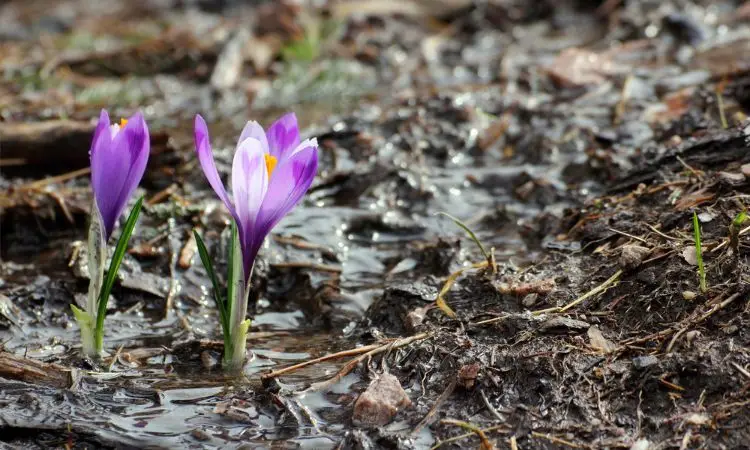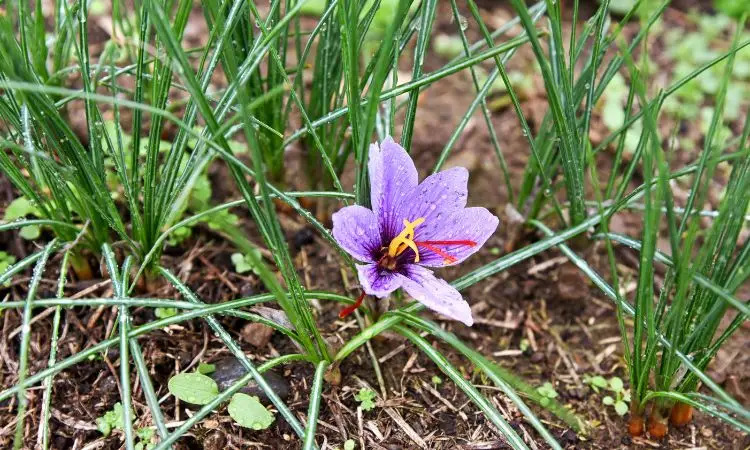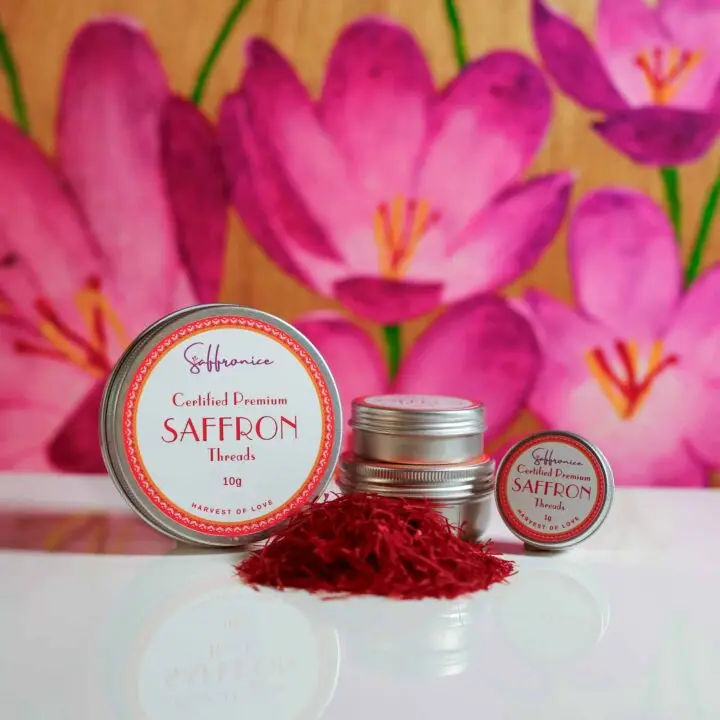Cultivating saffron, the world’s most precious spice, can be both rewarding and challenging for farmers and gardeners alike. Success in saffron farming requires navigating numerous obstacles—from soil preparation and climate adaptation to disease management and harvesting complexities. This comprehensive guide explores the primary challenges encountered in saffron cultivation and provides practical, expert-backed solutions to help growers overcome these hurdles and maximize production quality and yield.
📌 Quick Answer: The main saffron growing challenges include poor soil drainage and pH imbalances, climate sensitivity (requiring specific temperature ranges), fungal diseases like corm rot, pest infestations, precise irrigation management, labor-intensive harvesting, and proper post-harvest storage. Solutions involve soil amendments, drip irrigation systems, integrated pest management, timely harvesting, and controlled storage conditions at 5-15°C with 50-60% humidity.
Key Takeaways
- Soil preparation is critical—saffron requires well-drained soil with a pH of 6.0-8.0
- Climate adaptation strategies help growers succeed in diverse regions
- Integrated pest and disease management prevents major crop losses
- Precision irrigation systems optimize water use and plant health
- Proper harvesting timing and techniques preserve saffron quality
- Post-harvest handling directly impacts final product value
- Understanding commercial challenges improves market competitiveness

Understanding Saffron Plant Basics
Before tackling cultivation challenges, understanding the saffron crocus (Crocus sativus) and its unique requirements provides the foundation for successful saffron cultivation.
Saffron Crocus Botanical Characteristics
The saffron crocus is a perennial flowering plant from the Iridaceae family, producing vibrant purple flowers with three vivid red stigmas—the prized saffron threads. Each corm produces 1-5 flowers annually, with plants reaching 10-15cm in height. The slender, grass-like leaves emerge alongside flowers, creating distinctive visual markers that help growers monitor plant health.
Food Scientist’s Note: Saffron is sterile and cannot reproduce through seeds—propagation occurs exclusively through corm division. This genetic consistency ensures uniform quality but also limits genetic diversity and disease resistance options compared to seed-propagated crops.
Optimal Growing Conditions Overview
Saffron thrives under specific conditions that replicate its Mediterranean origins:
Soil Requirements:
- Well-drained, nutrient-rich soil prevents waterlogging
- Slightly alkaline pH between 6.0-8.0 (optimal: 7.0-7.5)
- Organic matter content: 2-4%
- Depth: Minimum 20cm for proper root development
Light and Temperature:
- Full sun exposure (minimum 6 hours daily)
- Moderate temperatures: 15-25°C (59-77°F) during growing season
- Cool dormancy period: Summer temperatures can exceed 35°C
- Autumn cooling triggers flowering response
Climate Pattern:
- Warm, dry autumns for flowering
- Cool, wet winters for foliage growth
- Hot, dry summers for dormancy
Life Cycle and Growth Stages
Understanding saffron’s reverse growing pattern is essential for managing cultivation challenges. The plant follows a unique cycle opposite to most crops:
Dormancy (May-August): Corms rest underground during the hot summer months
Flowering (October-November): Purple blooms emerge for 2-3 weeks, requiring immediate harvest
Vegetative Growth (December-April): Leaves develop, corms multiply, and plants store energy
Pre-Dormancy (Late April-May): Foliage yellows and dies back as temperatures rise
Chef’s Professional Tip: The brief flowering window creates intense harvest pressure. In professional kitchens, we’ve learned that the most aromatic saffron comes from flowers picked at dawn on cool mornings. Temperature affects the volatile compounds in the stigmas—warmer harvesting conditions allow aroma molecules to evaporate.
Soil-Related Issues and Solutions
Soil problems represent some of the most common obstacles in saffron cultivation. Addressing these foundational issues prevents cascading problems throughout the growing season.
Drainage Problems and Solutions
Saffron corms are extremely sensitive to waterlogged conditions, which cause root rot, fungal diseases, and complete corm failure. Poor drainage is the single most common cause of saffron crop failure.
Drainage Solutions:
Raised Beds: Elevate planting areas 20-30cm above ground level using wooden frames or soil mounding
Soil Amendments: Incorporate coarse sand (20-30% by volume) and organic matter to improve porosity
Subsurface Drainage: Install drainage tiles or perforated pipes 40-60cm deep in heavy clay soils
Sloped Fields: Select naturally sloped locations allowing gravity-assisted drainage
Testing Drainage: Dig 30cm deep holes, fill with water, and observe. Water should drain within 24 hours for suitable saffron sites.
pH Balance Management
Saffron productivity and nutrient availability depend heavily on proper soil pH. Outside the optimal range, essential nutrients become locked and unavailable to plants.
pH Management Strategies:
Regular Testing: Test soil pH annually before planting season using reliable meters or laboratory analysis
Raising pH (Acidic Soils): Apply agricultural lime (calcium carbonate) at 2-4 tons per hectare, incorporating thoroughly 2-3 months before planting
Lowering pH (Alkaline Soils): Add elemental sulfur at 0.5-1.5 tons per hectare or use acidifying organic amendments like pine bark mulch
Maintaining Balance: Monitor pH every 6-12 months and make minor adjustments as needed
Food Scientist’s Note: pH affects the ionic form of nutrients in sothe il solution. Iron, manganese, and phosphorus availability drops dramatically in alkaline soils (pH >8.0), causing chlorosis and stunted growth even when these nutrients are present in the soil.
Nutrient Deficiencies
Balanced nutrition is essential for healthy corm development and optimal flower production. Common deficiencies include:
Nitrogen Deficiency:
- Symptoms: Slow growth, pale yellow leaves, reduced flower production
- Solution: Apply composted manure (10-15 tons/hectare) or organic nitrogen fertilizers (40-60 kg N/hectare) in early spring
Phosphorus Deficiency:
- Symptoms: Stunted growth, purple-tinted leaves, delayed flowering
- Solution: Incorporate rock phosphate or bone meal (50-80 kg P₂O₅/hectare) before planting
Potassium Deficiency:
- Symptoms: Weak stems, leaf edge browning, increased disease susceptibility
- Solution: Apply potassium sulfate (60-100 kg K₂O/hectare) during the active growth phase
Climate and Weather Impact on Saffron Production
Climate represents both a major challenge and opportunity in saffron cultivation. Understanding saffron farming climate requirements helps growers adapt practices to their specific regions.
Temperature Sensitivity
Saffron exhibits remarkable temperature sensitivity throughout its growth cycle. Temperature extremes or unseasonable fluctuations can devastate crops.
Temperature Challenges:
Premature Warming: Autumn heat waves (>28°C) during flower bud development can abort flowering or reduce flower numbers by 30-50%
Frost Damage: Unexpected frosts below -10°C can damage emerging flowers and reduce yields dramatically
Inadequate Chilling: Insufficient winter cooling prevents proper corm development, reducing next season’s flower production
Adaptation Strategies:
- Select microclimate sites with natural temperature moderation (near water bodies, protected valleys)
- Use shade cloth during unseasonable heat to reduce temperatures by 5-7°C
- Apply mulch to moderate soil temperature fluctuations
- Plant earlier in regions with early autumn cooling
- Choose saffron cultivars adapted to specific temperature ranges
Precipitation Patterns
Rainfall timing and intensity profoundly affect saffron success, with both excess and deficiency causing problems.
Precipitation Challenges:
Drought During Growth: Extended dry periods reduce foliage development and corm multiplication
Excessive Rain During Flowering: Heavy rainfall damages delicate flowers and prevents harvesting
Summer Rainfall: Unexpected dormant-season precipitation can trigger fungal diseases in dormant corms
Waterlogging: Prolonged soil saturation causes root rot and corm death
Water Management Solutions:
Implementing proper saffron irrigation needs management, combined with drainage infrastructure, addresses most precipitation-related challenges. Modern saffron farm equipment, including drip irrigation systems, provides precise water control regardless of rainfall patterns.
Disease Management in Saffron Crops
Disease prevention and management are critical for successful saffron cultivation, particularly given the crop’s vulnerability to soil-borne pathogens.
Common Fungal Infections
Corm Rot (Fusarium oxysporum):
- The most devastating saffron disease, causing complete corm decay
- Symptoms: Yellowing leaves, stunted growth, rotting corm interior
- Prevention: Use disease-free planting stock, ensure excellent drainage, and practice 4-5 year crop rotation
- Treatment: Remove infected plants immediately; apply biological fungicides (Trichoderma spp.) preventatively
Leaf Spot (Alternaria spp.):
- Brown spots on leaves are reducing photosynthetic capacity
- Prevention: Avoid overhead irrigation, maintain proper plant spacing (10-15cm) for air circulation
- Treatment: Apply organic copper fungicides or sulfur sprays at the first sign
Violet Root Rot (Rhizoctonia crocorum):
- Purple fungal growth on roots and corms
- Prevention: Soil solarization before planting, use resistant cultivars
- Treatment: Difficult to control once established; remove affected plants and surrounding soil
Chef’s Professional Tip: In my experience testing saffron from various sources, disease-affected crops produce threads with diminished aroma and color intensity. The biochemical stress from fungal infections reduces the concentration of crocin and safranal—the compounds giving saffron its value.
Bacterial Disease Prevention
Bacterial Soft Rot (Pectobacterium spp.):
- Rapid corm decomposition, particularly in wet conditions
- Prevention: Excellent drainage, avoid mechanical damage during handling, cure corms properly after harvest
- Treatment: No effective treatment; focus on prevention
Prevention Strategies for All Diseases:
- Source certified disease-free planting material
- Practice organic saffron farming methods that build soil health
- Implement crop rotation (minimum 4 years between saffron plantings)
- Maintain optimal soil conditions (pH, drainage, nutrition)
- Monitor regularly for early detection
- Remove and destroy infected plants immediately
Pest Control Strategies
While saffron faces fewer pest pressures than many crops, certain insects and animals can cause significant damage, requiring integrated management approaches central to sustainable saffron farming.
Common Saffron Pests
Rodents (Mice, Voles):
- Feed on corms, causing direct loss and disease entry points
- Control: Traps, raptor perches, encouraging natural predators, and maintaining clean field borders
Birds (Crows, Starlings):
- Damage flowers during the bloom period
- Control: Netting during flowering, reflective tape deterrents, noise devices
Insects (Wireworms, Cutworms):
- Larvae feed on corms and roots
- Control: Beneficial nematodes, crop rotation, deep cultivation, exposing larvae to predators
Rabbits and Hares:
- Consume foliage, reducing photosynthesis and corm development
- Control: Fencing (minimum 60cm high), habitat modification
Integrated Pest Management (IPM)
Cultural Controls:
- Maintain weed-free fields, eliminating pest habitat
- Time planting to avoid peak pest activity periods
- Use trap crops on field borders
- Encourage beneficial insects through companion planting
Biological Controls:
- Introduce predatory insects (ground beetles, parasitic wasps)
- Use Bacillus thuringiensis (Bt) for caterpillar control
- Maintain habitat for natural predators (birds, beneficial insects)
Physical Barriers:
- Install bird netting during the flowering season
- Use row covers to protect young growth
- Create underground barriers preventing rodent access
Minimal Chemical Use:
- Reserve pesticides for severe infestations only
- Choose selective products targeting specific pests
- Apply during non-flowering periods when possible
- Follow organic certification standards if applicable
Irrigation Challenges and Solutions
Water management represents one of the most nuanced aspects of saffron cultivation, balancing between adequate hydration and waterlogging prevention.
Watering Schedule Optimization
Saffron’s reverse growing cycle requires dramatically different irrigation approaches throughout the year:
Dormancy Period (Summer): Minimal to no irrigation; soil should remain mostly dry
Pre-Flowering (September): Resume irrigation gradually; 20-30mm weekly
Flowering Period (October-November): Maintain consistent moisture; 15-20mm every 3-4 days
Vegetative Growth (December-April): Moderate irrigation; 20-30mm weekly adjusted for rainfall
Pre-Dormancy (May): Gradually reduce irrigation to zero
Modern Irrigation Systems
Drip Irrigation Advantages:
- Water efficiency improvement: 40-50% reduction in usage
- Precise delivery to the ot zone
- Reduced disease pressure from dry foliage
- Fertilizer integration capability
- Labor savings through automation
System Components:
- Emitter spacing: 20-30cm apart
- Flow rate: 1-2 liters per hour per emitter
- Pressure regulation: 1.0-1.5 bar
- Filtration preventsmitter clogging
Moisture Monitoring
Monitoring Tools:
- Tensiometers measuring soil water tension (optimal: 30-40 centibars for saffron)
- Electronic soil moisture sensors at 10-15cm depth
- Visual inspection and feel method for experienced growers
- Plant appearance indicators (leaf color, turgidity)
Food Scientist’s Note: Soil moisture stress during flowering reduces the concentration of water-soluble compounds in stigmas. Conversely, excessive moisture dilutes these compounds. Maintaining consistent, moderate moisture during flowering optimizes the crocin content that determines saffron’s commercial grade.

Harvesting Difficulties and Best Practices
Saffron harvesting presents unique challenges that significantly impact both yield and quality. Understanding proper saffron harvesting methods is essential for success.
Timing Challenges
The Critical Window: Saffron flowers bloom for only 2-3 weeks annually, requiring intense labor during this brief period.
Daily Timing: Flowers must be picked early morning (dawn to 9 AM) before they fully open and stigmas become exposed to heat and light
Flower Lifespan: Individual flowers last only 24-48 hours after opening; delayed harvest reduces quality
Labor-Intensive Process
Saffron harvesting remains stubbornly manual despite technological advances:
Harvest Requirements:
- 150-200 flowers produce 1 gram of dried saffron
- Each flower must be individually hand-picked
- Stigma separation requires careful manual work
- Processing must occur within hours of harvest
Labor Optimization Strategies:
- Train harvest teams in efficient techniques
- Organize collection stations at field edges
- Establish processing teams to separate immediately
- Use specialized harvesting scissors or plucking tools
- Schedule adequate labor (15-20 person-hours per 1000 m²)
Quality Preservation
Harvest Best Practices:
- Pick flowers with closed or just-opening tepals
- Handle gently, preventing stigma damage
- Use shallow baskets, avoiding flower crushing
- Process immediately after collection
- Separate stigmas carefully, retaining 2-3mm of the yellow style
- Dry stigmas immediately at 35-45°C for 30-60 minutes
Chef’s Professional Tip: The handling during those first hours after harvest determines final quality more than any other factor. Rough handling breaks cellular structures, causing oxidation that reduces aroma intensity. The best saffron suppliers obsess over gentle harvest and immediate processing.
Storage and Post-Harvest Handling
Proper post-harvest handling and storage are essential for maintaining saffron quality and market value. Even perfectly grown saffron can lose value through poor storage methods.
Temperature Control
Optimal Storage Conditions:
- Temperature: 5-15°C (41-59°F)
- Consistent temperature prevents fluctuations
- Cool, dark environment blocking light exposure
- Separate from strong-smelling substances
Storage Methods:
- Climate-controlled rooms or refrigeration units
- Underground storage in traditional cellars (constant cool temperatures)
- Insulated containers in cooler climates
- Commercial cold storage for large operations
Moisture Management
Target Moisture Content: 8-12% (properly dried saffron)
Moisture Control Systems:
- Airtight containers prevent moisture absorption
- Desiccant packets in storage containers
- Dehumidifiers in storage rooms (maintaining 50-60% relative humidity)
- Vacuum sealing for long-term storage
- Regular moisture testing ensures stability
Storage Duration:
- Optimal quality: First 12 months
- Acceptable quality: Up to 24 months with proper storage
- Gradual decline: Beyond 2 years
Yield Optimization Techniques
Maximizing saffron yield requires attention to multiple factors throughout the cultivation cycle, directly impacting saffron grading systems and market value.
Corm Management
Selection and Planting:
- Use large, healthy corms (8-10g minimum; 12-15g optimal)
- Plant at proper depth (10-15cm) and spacing (10-15cm between corms)
- Orient corms properly (growing points upward)
- Refresh planting stock every 5-7 years
Multiplication Strategies:
- Allow corms to multiply naturally for 3-5 years before harvesting
- Balance between flower production and corm multiplication
- Lift and divide overcrowded plantings
Fertilization Practices
Nutrient Requirements:
- Nitrogen: 40-60 kg/hectare annually (split applications)
- Phosphorus: 50-80 kg P₂O₅/hectare (pre-plant incorporation)
- Potassium: 60-100 kg K₂O/hectare (during active growth)
- Micronutrients: Zinc, boron, and iron as needed based on soil tests
Application Timing:
- Spring: Nitrogen for foliage development
- Late spring: Potassium for corm building
- Fall: Phosphorus and micronutrients pre-flowering
Advanced Cultivation Methods
Intercropping: Grow compatible crops between saffron rows (legumes, certain vegetables) for additional revenue without competing for resources
Protected Cultivation: Use shade structures or greenhouses to moderate temperatures and extend the growing season in marginal climates
Precision Agriculture: Employ GPS mapping, drone monitoring, and data analysis op, optimizing inputs and identifying problem areas early
Commercial Growing Obstacles and Solutions
Commercial saffron production faces unique challenges beyond cultivation, affecting overall saffron farming profitability.
Market Challenges
Price Volatility: Saffron prices fluctuate significantly based on supply, quality, and global production
Competition: Established producers in Iran, Spain, and Kashmir dominate markets
Adulteration: Widespread fake or low-quality saffron undermines market confidence
Solutions:
- Develop direct marketing channels to consumers and restaurants
- Build brand reputation based on quality and authenticity
- Obtain certifications (organic, geographical indication)
- Educate buyers about quality differences
- Partner with reputable distributors, understanding saffron quality standards
Quality Control
Maintaining consistent, documented quality separates successful commercial operations from struggling ones.
Quality Assurance Systems:
- Implement ISO 3632 testing protocols
- Measure key parameters: crocin (color), picrocrocin (flavor), safranal (aroma)
- Document cultivation practices demonstrating quality commitment
- Maintain batch traceability from the field to the final packaging
- Regular third-party testing verifies claims
Economic Considerations:
- High initial investment: Land preparation, corms, irrigation infrastructure
- Labor costs: Harvest labor represents 30-40% of production costs
- Processing equipment: Drying, cleaning, and packaging systems
- Storage facilities: Climate-controlled spaces
- Certification costs: Organic or quality certifications
- Marketing and distribution: Building sales channels
Investment Return Timeline:
- Year 1-2: Establishment phase, minimal flower production
- Year 3-5: Peak production period, full returns
- Year 6+: Declining productivity, replanting needed
Frequently Asked Questions
What is the most common cause of saffron crop failure?
Poor drainage leading to waterlogged soil conditions is the most common cause of saffron crop failure. Saffron corms are extremely sensitive to excess moisture, which causes root rot, fungal diseases like Fusarium, and complete corm decay. Ensuring excellent soil drainage through raised beds, soil amendments, or selecting naturally well-drained sites prevents this leading cause of failure.
How can I prevent diseases in my saffron crop?
Disease prevention requires a multi-pronged approach: use certified disease-free planting stock, ensure excellent soil drainage, maintain proper pH (6.0-8.0), practice crop rotation (minimum 4 years between saffron plantings), avoid overcrowding plants, remove infected plants immediately, and apply preventative biological fungicides like Trichoderma. Building healthy soil through organic matter additions strengthens plant resistance naturally.
What’s the best irrigation system for saffron cultivation?
Drip irrigation is optimal for saffron cultivation because it delivers water directly to the root zone, reduces disease pressure by keeping foliage dry, improves water efficiency by 40-50%, allows precise scheduling, and can integrate fertilizers. Install drip lines with emitters spaced 20-30cm apart, delivering 1-2 liters per hour. This system adapts to saffron’s varying water needs throughout its unique growth cycle.
Why is saffron harvesting so labor-intensive?
Saffron harvesting requires manual labor because: (1) flowers must be picked individually by hand during a brief 2-3 week window, (2) only the three red stigmas are valuable (less than 10% of flower weight), (3) stigma separation requires delicate manual work, (4) flowers must be processed within hours of harvest, and (5) timing is critical—flowers should be picked at dawn before fully opening. These factors make mechanization virtually impossible with current technology.
How do I know when my saffron is ready to harvest?
Saffron is ready to harvest when purple flowers first emerge from the soil, typically in October-November, depending on location. The optimal harvesting time is early morning (dawn to 9 AM) when flowers are closed or just beginning to open. Flowers should be picked before they fully open to protect the delicate stigmas. The entire flowering period lasts only 2-3 weeks, requiring daily monitoring and harvesting during this critical window.
What causes low saffron yields?
Low yields result from multiple factors: poor-quality or undersized corms (use 10g+ corms), inadequate soil drainage and pH, insufficient nutrients (especially nitrogen and phosphorus), improper irrigation timing, pest or disease problems, unsuitable climate conditions, incorrect planting depth or spacing, and aging plantings (productivity declines after 5-7 years). Addressing these systematically improves yields significantly.
How should I store saffron after harvest to maintain quality?
Store dried saffron (8-12% moisture) in airtight, opaque containers at 5-15°C in a dark location with 50-60% relative humidity. Protect from light, moisture, heat, and strong odors. Use glass or food-grade metal containers with tight seals. Consider vacuum sealing for long-term storage. Properly stored saffron maintains optimal quality for 12 months and acceptable quality for 24 months. Test moisture levels periodically to ensure stability.
Conclusion
Successfully growing saffron requires addressing numerous challenges across all cultivation stages—from soil preparation and climate adaptation to disease management, harvesting, and post-harvest handling. While the obstacles may seem daunting, systematic application of the solutions outlined in this guide enables growers to overcome these hurdles and produce high-quality saffron.
The key to success lies in understanding saffron’s unique requirements, implementing preventative strategies rather than reactive solutions, and maintaining consistent attention to detail throughout the growing season. Whether managing a small garden plot or commercial operation, the fundamentals remain the same: excellent drainage, proper pH, integrated pest management, precise irrigation, timely harvesting, and careful post-harvest handling.
For growers looking to enter the saffron market, understanding both cultivation challenges and commercial considerations is essential. Building qa quality reputation through consistent product excellence, obtaining relevant certifications, and developing direct marketing channels helps overcome market competition. Those seeking premium saffron understand the difference that careful cultivation makes in final product quality.
With patience, attention to detail, and application of proven practices, saffron cultivation can be both rewarding and profitable despite its challenges. The satisfaction of producing the world’s most precious spice makes overcoming these obstacles worthwhile for dedicated growers worldwide.



